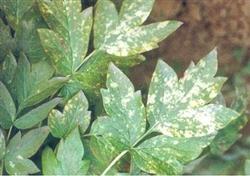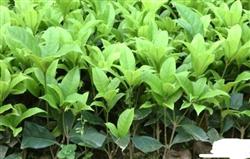How to propagate Osmanthus fragrans by Cuttage

Cuttings should choose the right time. Osmanthus spring shoots, stop development at the end of April, to the end of June has become semi-old not tender strong branches. This kind of strong branch vitality is the strongest, uses the cuttage to be quite easy to survive. The optimum temperature for osmanthus fragrans growth is 25℃-28℃ and it grows slowly when it exceeds 30℃. Therefore, cutting in the lower reaches of the Yangtze River is better in the second half of June. Autumn can also be carried out, but the survival rate is low, and special attention should be paid to cold weather for the growth of new seedlings. Cuttings are best done in the open. Select sandy loam seedbed, should not use clayey soil. Winter ploughing should be carried out in advance, and fine soil preparation should be carried out in spring. For ridge height of 20 cm, into turtle-back shape, covered with grass protection, so as not to rain hardening. It is best to place a large water tank in the bed, to store water one day before watering, so as not to have too much difference between water temperature and soil temperature. Generally, the "heel insertion method" is adopted. Heel cutting is cutting new branches with a little bit of old branch skin at the lower end, shaped like heels. The heel is closely organized, rich in nutrients, and prone to new roots. The cuttings are about 10 cm long, with a pair of leaves at the top and all the leaves below cut off. The pair of leaves left must not be damaged or cut small. Insert cuttings 6-8 cm into the soil and compact the surrounding soil with your fingers. Plant spacing 12× 3 cm. After planting, it must be carefully managed, and water should be poured thoroughly. It is best to spread a layer of broken grass on the soil surface before watering, so as not to muddy the leaves and prevent the soil from hardening. Followed by shade with reed curtain, otherwise unfavorable survival. Commonly used high and low double-layer shade, neither direct sunlight, but also breathable ventilation. Water should not be too much to prevent root rot. In dry and hot weather, spray water on leaves twice or three times a day. Generally inserted 1 month after the birth of nodules, 2 months later, you can start to bask in the sun for 1 hour in the morning, and then shade. After that, the sunlight exposure time gradually increased. By October the low shade can be removed and the seedlings receive semi-scattered light from the high shade all day. At the end of November, the high shed was changed into a warm shed to prevent cold, and the seedlings must be covered with a thin layer of straw. In winter, when the soil is white, sprinkle water once at noon. The second year after warm weather, sunny days still have to shade, appropriate in the watering water plus 10 percent decomposed liquid fertilizer. At the end of the second year, the seedling height reaches 1 foot. Transplanted in the spring of the third year.
- Prev

Cultivation techniques of spider plant
Peony as the "national flower" of our country, because of its unique cultural heritage and ornamental, in recent years, rapid development at home and abroad, with the continuous expansion of peony planting area, peony cultivation management and pest control situation has become increasingly grim. This article introduces the cultivation and management methods of peony, and common diseases of peony...
- Next

Cuttage propagation method of osmanthus fragrans
Cuttings should choose the right time. Osmanthus spring shoots, stop development at the end of April, to the end of June has become semi-old not tender strong branches. This kind of strong branch vitality is the strongest, uses the cuttage to be quite easy to survive. The optimum temperature for osmanthus fragrans growth is 25℃-28℃ and it grows slowly when it exceeds 30℃. Therefore, the lower reaches of the Yangtze River in the second half of June...
Related
- Fuxing push coffee new agricultural production and marketing class: lack of small-scale processing plants
- Jujube rice field leisure farm deep ploughing Yilan for five years to create a space for organic food and play
- Nongyu Farm-A trial of organic papaya for brave women with advanced technology
- Four points for attention in the prevention and control of diseases and insect pests of edible fungi
- How to add nutrient solution to Edible Fungi
- Is there any good way to control edible fungus mites?
- Open Inoculation Technology of Edible Fungi
- Is there any clever way to use fertilizer for edible fungus in winter?
- What agents are used to kill the pathogens of edible fungi in the mushroom shed?
- Rapid drying of Edible Fungi

